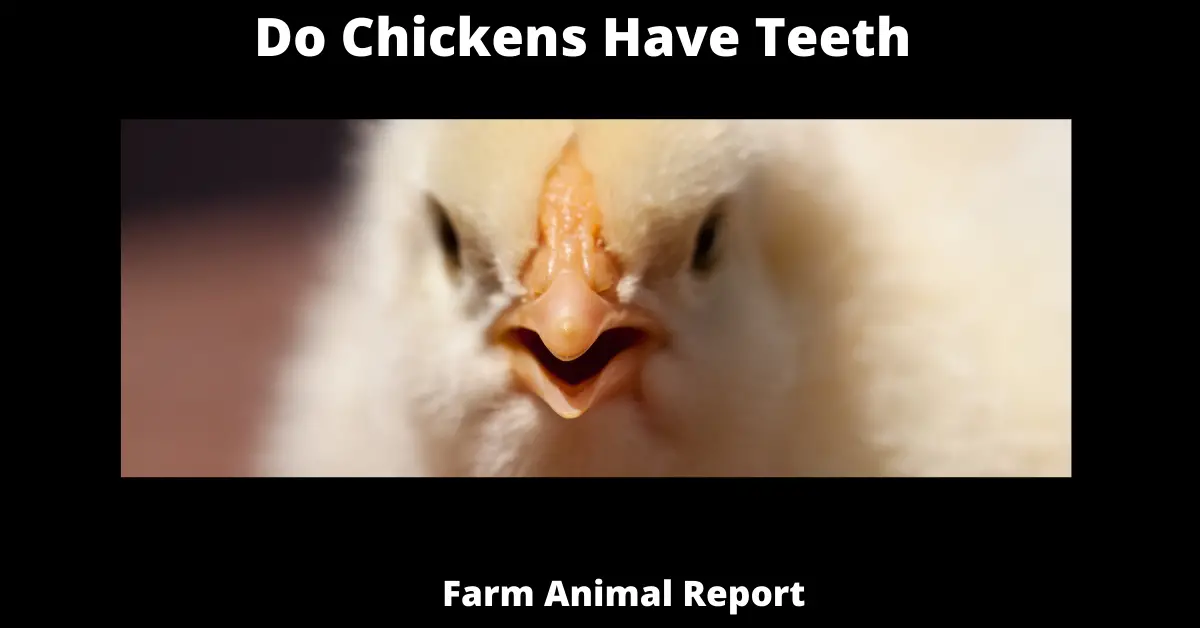Do chickens have teeth – The Chicken, is unlike other animals do not have teeth. They Grind their Food with Grit in their Gizzard which is found between the chicken’s stomach and intestine is used by the chicken to grind its food.
Like other birds, chickens don’t have teeth – Chickens don’t have teeth. So how do they eat with no teeth? Instead they rely on grit, or coarse dirt, stones and rocks to digest their food. As Whole Chickens do not have teeth, they do have a tooth (known as egg tooth); however, it is only for a short time. on the chick’s beak. Because their beaks are relatively soft in the first week or two, it’s a single triangular small bone attached to the end of the beak that aids in pipping out of the egg. Because the egg is no longer helpful, it falls off after two or three days.
Do chickens have teeth? – They Do Not it’s not true. The chicken, unlike other animals, does not have teeth. Instead, they have a gizzard, which is found between the chicken’s stomach and intestine is used by the chicken to grind its food.
Do Chickens Have Teeth – How do Chickens Eat Without Teeth?
When a chicken eats, it will continuously peck and smash a massive chunk of food against the ground in order to break it down into small enough bits to swallow.
The food is then stored in the chicken’s crop, a balloon-like pouch located just right of center at the base of the neck.
Paragraph For Amazon Resources for Raising Meat Chickens
It’s usual for your chickens’ crops to be complete and round before nightfall and then flat and empty in the morning.
During the day, the food they eat mixes with water and other liquids and healthy bacteria and is stored there.
12 Ways to Make Money by Chicken Farming—Extensive Guidelines for Chicken Farmers
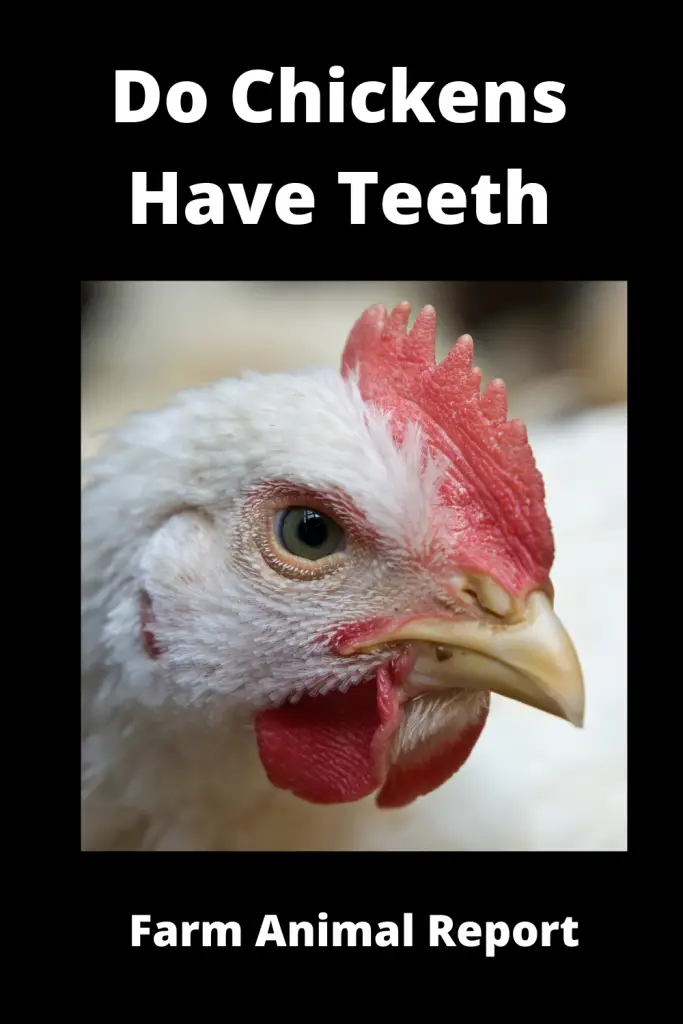
How do Chickens Eat their Food?
Incredibly, the birds can eat so quickly without choking or chewing their food first. This is because chickens have a natural system for consuming a large amount of food quickly and digesting it overnight while sleeping.
The hen swallows little morsels of food, such as tiny bugs, intact. However, if they consume anything that is too big for them to eat, they will shake, peck, or smash it against the ground or any more complex surface until smaller pieces fall off.
What Is A Chickens Crop?
The tiny pouch at the base of the esophagus in the chicken throat is known as the crop. On the right side of the center of your chicken’s breast, you may feel the crop.
The crop will feel soft and squishy in the morning before the hen has eaten, but it will plump up and bulge out as they consume during the day. You might believe your chicken has a tumor the first time you see this.
When the bird isn’t feeding, though, it shrinks overnight, which is normal crop behavior. Of course, please visit your veterinarian if you have any concerns regarding the health of your flock.
The crop’s role is to keep food that has been swallowed safely. The metal reacts with water and saliva in the crop, which includes digesting enzymes. This aids at the beginning of the food breakdown.
When hens feed, food can be held in their crop for up to 12 hours before moving into the gizzard (stomach).
What Is A Chicken’s Gizzard?
The gizzard is a component of the chicken’s digestive system that processes food. It forms the chicken’s stomach, together with the proventriculus.
The proventriculus is a part of the proventriculus. It is a bit holding place for food on its way from the crop to the gizzard.
The gizzard contains small stones or grit that aid in the digestion of food as it passes through the digestive tract. Before entering the intestines, it employs muscle contractions to grind the meal against the grit to break it down into easily digestible pieces.
This is why hens don’t need teeth since the procedure takes place in the gizzard rather than the mouth before swallowing.
Why Do Chickens Need Grit?
Grit is beneficial to chickens’ digestive health as well as calcium and mineral uptake. Unfortunately, many people believe that you don’t need to feed them grit if you let your chickens roam free.
Unfortunately, this might cause problems because your chickens won’t be able to digest their food correctly if they don’t get enough grit. So grit should always be available to your hens to promote optimum health.
Grit is available in two varieties and can be purchased at your local feed store. While the ground oyster shell is commonly referred to as grit, it is not the sort of grit your birds require for digestion. While it is beneficial for giving calcium, your hens lay eggs with robust shells, it is not the type of grit your birds need for digestion.
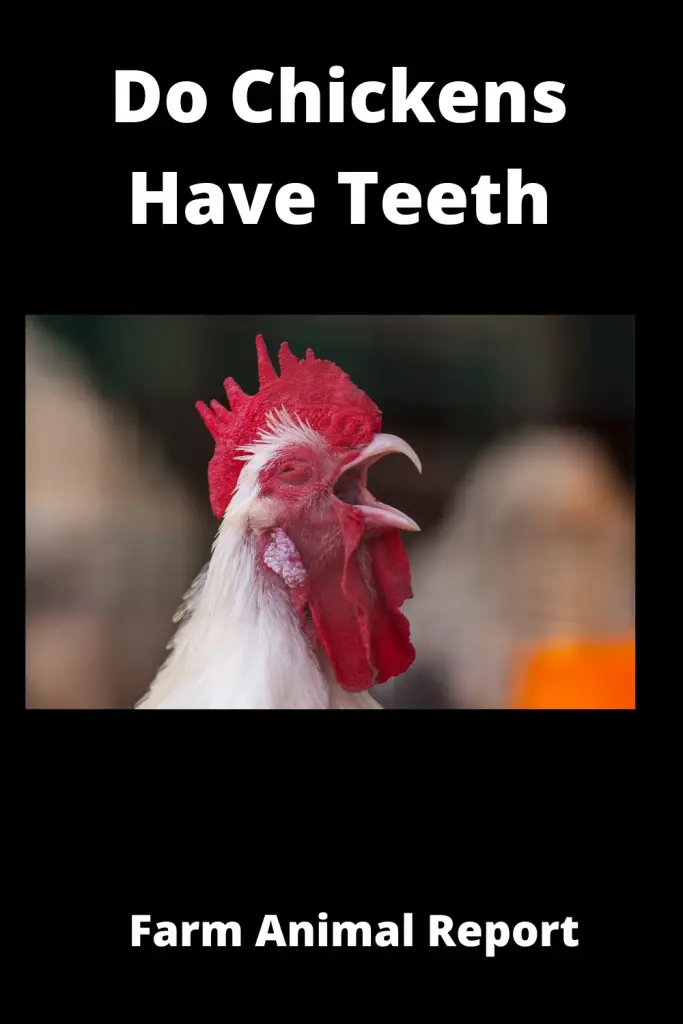
Instead, search for flint grit derived from powdered granite; this insoluble grit will remain in the bird’s gizzard and aid in food grinding.
Then sprinkle some in the chicken enclosure and dust bath area, but keep a tray full of grit in the chicken coop or yard at all times. This allows you to tell when it needs to be replenished quickly.
Chickens are aware of when they require grit and will eat pebbles and other small stones as needed. In addition, chickens don’t have teeth to chew their food, but they have a crop and a gizzard that work together to break it down into tiny bits before entering their intestines. These factors combine to help chickens feed throughout the day and full their crops while giving their stomachs time to process the food more slowly later.
Can Chickens Grow Teeth? (Tooth)
Chickens, in general, are unable to develop teeth. However, University of Wisconsin’s Matthew Harris found that the beak of a mutant chicken embryo he studied had come off. He discovered tiny ridges and bumps along the edge of the snubbed brim that looked like teeth—specifically, alligator teeth. The discovery indicated that hens maintain the ability to produce teeth, even though birds have lost this ability long ago.
Chicken Breeds with Teeth (Birds)
There is currently no breed of chicken on planet Earth that has teeth. All species of chickens have temporary egg teeth on the beak when they hatch. Later on, it fell off.
Science of How Chickens Eat!
Food is ingested with the beak, ideal for pecking crumbled or pelleted feed, small grains, grass, or insects. Chickens are omnivores like humans, which means they can consume both meat (grubs, worms, and rare rodents) and greenery in addition to commercial feed (grass, weeds, and other plants). As the food passes from the chicken’s mouth to the esophagus, a tiny amount of saliva and digesting enzymes are added.
Food travels from the esophagus to the crop and expanding the storage compartment at the base of the chicken’s neck, where it can be stored for up to 12 hours. Then, the food passes through the crop and into the bird’s stomach (proventriculus or gizzard), where digestion enzymes are added, and the food is physically ground.
Chickens do not require teeth because of their gizzard. Instead, a muscular portion of the stomach grinds grains and fiber into smaller, more digestible bits using grit (small, hard pebbles or sand particles).
Food goes from the gizzard to the small intestine, where nutrients are absorbed. The residue then goes through the ceca, a blind sack in the lower intestine where bacteria aid in the digestion of undigested food. Finally, food passes from the ceca to the large intestine, absorbing water and drying out indigestible substances.
The leftover residue goes via the cloaca, mixed with the waste from the chicken’s urine (the white in chicken droppings). Both leave the chicken through the vent, which is the cloaca’s exterior orifice. Also, don’t think of chicken dung as “trash” to be thrown away.
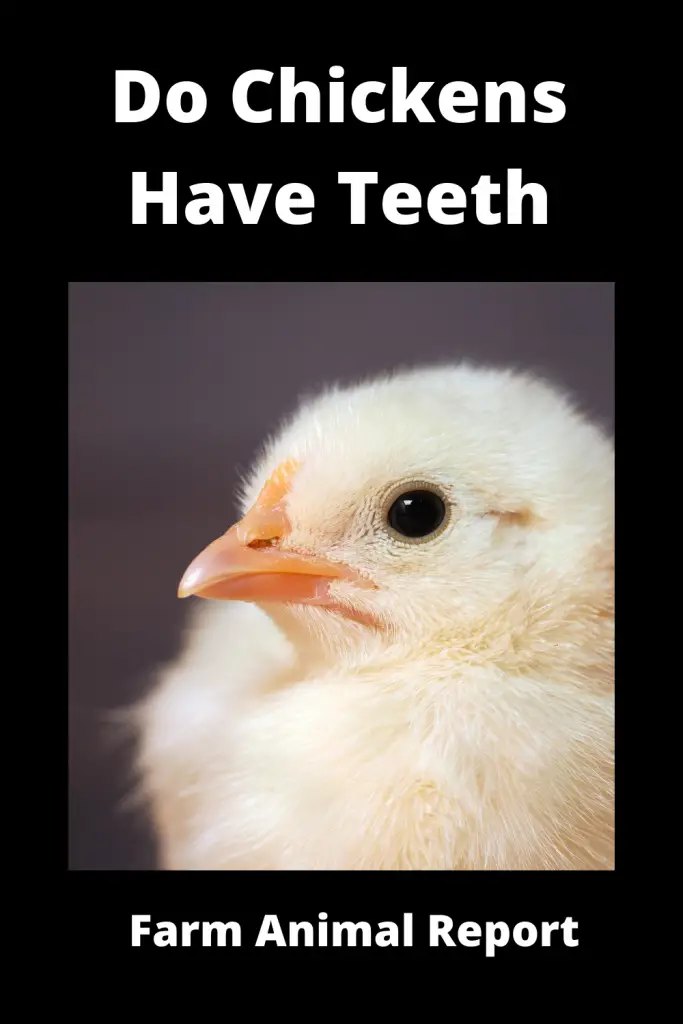
It’s an excellent fertilizer for flower beds and food gardens. However, it’s best to let it age in a compost pile because of its high nitrogen content before using it in your gardens.
Take a look inside the Poultry Digestive System
Understanding how a chicken or other fowl digests its meal is crucial. Here’s a basic rundown of how food passes through their intestines.
- The mouth is where it all begins.
- Gullet (Esophagus): Transports food from the mouth to the stomach.
- Crop: A pouch in the esophagus that momentarily stores food before passing it on to the stomach.
- Stomach (Proventriculus or “Gizzard”): This organ breaks down food into tiny pieces. It is divided into two sections: the storage proventriculus and the gizzard. The gizzard is a muscle component of the stomach that grinds grains and fiber into smaller pieces with the help of grit.
- Small Intestine: Helps with digestion and absorption of nutrients. The duodenum, jejunum, and ileum make up the ileum.
- Liver: The body’s largest glandular organ. Helps in glucose, lipid, and protein metabolism.
- Ceca: Bacterial activities in the ceca aids in the digestion of food that passes through the intestine undigested. The ceca link with the cloaca and become the large intestine.
- Large Intestine: The large intestine’s purpose testing is to absorb water, dry out indigestible meals, and expel waste.
- The cloaca: It is the junction of the digestive, urinary, and reproductive systems.
- Urinary System: Two kidneys and two ureters make up the urinary system. The kidneys are found in the bones of the pelvis. They filter waste from the blood and transport it to the outside via the ureter and cloaca/vent.
What do Chickens Eat in the Wild?
The wild fowl’s diet consists primarily of insects. Termites and flying ants are its favorite insects, which it can hunt on at dawn and nightfall. Termites are high in fat and protein, so they’re an excellent food source for wildfowl and other birds. Other insects and invertebrates found by scratching the ground, such as earthworms, will be consumed by jungle fowl and wild chickens.
Jungle fowl and wild chickens will eat a wide variety of foraged plant stuff. Seeds, fruits and berries, young leaves, and other edible plant materials found in the jungle fowl or chicken’s current environment are examples of these foods. Bamboo seed is one of the red jungle fowl’s favorite plant meals. Jungle fowl will scrape and scratch until they find the tiny seeds.
Human food
Since Hurricane Katrina, feral hens descended from domesticated chickens have increased in densely populated regions, such as New Orleans. Though many people consider wild chickens to be a nuisance, they acquire some of their food from humans, which is why places like Bermuda seek to eradicate them. Bread, popcorn, and other human goods have made their way into the diet of wild hens.
What is Chickens’ Favorite Food?
Mealworms, among other insects, are a favorite of chickens, as are green vegetables such as lettuce, kale, turnip greens, and chard. In addition, when fed in moderation, watermelon, strawberries, and blueberries make healthful snacks for hens.
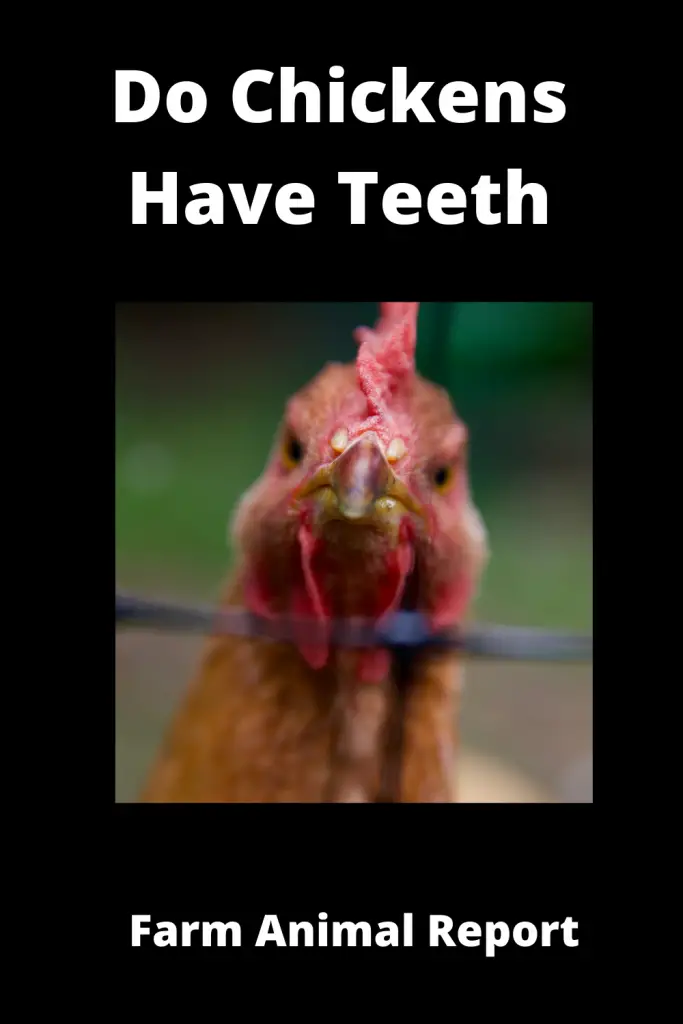
Among the Chicken’s Favorites are:
- Lettuce, beets, broccoli, carrots, kale, swiss chard, squash, pumpkins, and cucumbers are examples of vegetables that chickens love.
- Lavender, mint, oregano, parsley, cilantro, thyme, and basil are among the herbs chicken love.
- Daylilies, hostas, daisies, roses, coneflowers, and ferns are examples of perennials eaten by chickens.
If birds are allowed to roam freely, they will seek out and eat their preferred vegetation. Install a chicken fence or tunnel in your yard to keep them out of your favorite gardens, and consider developing a chicken-friendly garden for them to roam around in.
What Chickens Should not Eat?
Treats that may induce an off-flavor in eggs should be avoided. Garlic and onions are the two most prevalent ingredients that can alter the taste of eggs.
A few other foods should be avoided due to toxins that might make birds sick or even kill them.
Avocado pits and peels contain a toxin called persin, which is poisonous to chickens. However, the avocado flesh is suitable for chickens.
Beans undercooked or dried contain a chemical called hemagglutinin, which can prevent the bird from digesting everything it consumes.
Anthraquinones, which are found in rhubarb, have a laxative effect. In addition, rhubarb that the cold has severely damaged may contain significant levels of oxalic acid, which can be lethal to hens.
Moldy, rotting, and highly salted foods can cause incredibly moist feces, which can be poisonous.
Following the 90/10 rule and being aware of the things your chickens have access to makes feeding them a balanced and full diet straightforward. Begin with a complete feed as a baseline, and then avoid over-treating your birds with treats. When you give treats, make sure they’re healthy, wholesome snacks that go well with a bird’s diet.
What Can Chickens Eat besides Feed? 21 Foods
Alcohol, chocolate, and caffeine are examples of foods and beverages that do not belong in the chicken coop. Foods that are bad for people are usually bad for chickens, so stay away from processed foods with your flock. These foods are very high in sugar and salt, leading to weight gain and electrolyte imbalances. Heart failure can be caused by overeating salt. Also, because mold can be fatal to hens, rotting food should never be given to them. If you wouldn’t eat it, neither should your birds.
Vegetation with a lot of leaves might also be dangerous. Because tomatoes, peppers, and potatoes are nightshade plants, their leaves are poisonous to many animals. The toxin can be found in the skins of raw green potatoes, so while the flesh is okay, chickens should not be fed the peelings.
Fortunately, hens can consume a variety of healthy foods. Ensure that any product you buy is organic or pesticide-free. Limit reward servings to a few pecks to keep a bird’s diet balanced.
1. Tomatoes: Can Chickens Eat Them?
Yes, absolutely! This healthful food is a chicken’s favorite. Tomatoes are high in vitamins, fiber, and antioxidants, making a delicious chicken side dish. Just make sure they don’t consume the foliage or blossoms. Although most free-range birds are aware of this and would rather pluck a tasty tomato from the vine, you may want to consider fencing off tomato plants to safeguard your chickens.
2. Is it possible for Chickens to eat Peppers?
Yes, indeed. Pepper plants, like tomatoes, are nutritious fruit. But, unfortunately, peppers are usually not a favorite of chickens.
3. Carrots: Can Chickens Eat Them?
Yes, indeed. Carrots are nutrient-dense vegetables that can be eaten raw or cooked. The greens are also nutritious, but they should be cut for ease of consumption. Fresh carrots are preferable to canned carrots since canned carrots are heavy in salt.
4. Cucumbers: Can Chickens Eat Them?
Yes, indeed. Cucumbers provide an excellent snack for poultry. These water-rich vegetables, which are high in vitamins, minerals, and fiber, are incredibly refreshing during the hot summer months.
5. Is Cilantro Safe for Chickens to Eat?
Yes, indeed. This herb is high in vitamins and antioxidants and is beneficial to bone health.
6. Is Lettuce Safe for Chickens to Eat?
On occasion. Lettuce is typically beneficial for your birds, but the iceberg kind should be avoided. Iceberg lettuce is nutrient-deficient and can cause diarrhea. Instead, stick to leafy, dark greens.
7. Is Cabbage Safe for Chickens to Eat?
Yes, indeed. Cabbage is an excellent source of dietary roughage for your birds. It can also be used as a source of amusement. Chickens can peck at cabbage for hours if tied to a line or packed in a container with holes.
8. Is Celery Safe for Chickens to Eat?
On occasion. Celery is high in folate, fiber, and vitamins K and C, among other nutrients. However, because it is so stiff and stringy, it might create digestive problems. Cut celery into small, manageable pieces if you’re feeding it to hens.
9. Are Onions Safe for Chickens to Eat?
No, onions can cause anemia and alter the taste of eggs.
10. Is Pineapple Safe for Chickens to Eat?
On occasion. Because of its high sugar content, pineapple should be consumed in moderation.
11. Is it possible for Chickens to eat Blackberries?
Yes, indeed. Vitamin C is abundant in these delectable delicacies.
12. Is it Possible for Chickens to eat Blueberries?
Yes, indeed. These nutritious berries are a favorite of chickens. After this reward, you might notice some strange feces colors!
13. Is it Possible for Chickens to Eat Raspberries?
Yes, indeed. Raspberries are another popular poultry ingredient.
14. Can Chickens eat Pears?
Yes, indeed. Pears are low in sugar and healthful, but they aren’t usually a chicken’s first pick.
15. Is it Possible for Chickens to Eat Grapes?
On occasion. Chickens should consume grapes in moderation due to their high sugar content. To help digestion, use seedless varieties and cut them up.
16. Is it Possible for Chickens to Eat Apples?
Yes, indeed. Apples are a delicious and nutritious snack. However, when making chicken treats, they should be cut and cored. Remove the seeds first, as they may contain cyanide residues.
17. Is it Possible for Chickens to Eat Peaches?
Yes, indeed. This nutrient-dense berry is a favorite of chickens. However, because the pit contains cyanide, it must be removed first.
17. Can Chickens eat Cashews?
Yes, indeed. Cashews, unsalted in small pieces, are an excellent source of healthful fats.
18. Is it Possible for Chickens to Eat Popcorn?
Yes, indeed. A vitamin and fiber-rich chicken snack are plain, unsalted, unbuttered popcorn.
19. Is it Possible for Chickens to Eat Cheese?
On occasion. Because chickens have a hard time processing dairy, feed just tiny amounts of it.
20. Is it Possible for Chickens to Eat Bread?
On occasion. Bread is a favorite of chickens, but it lacks nutrients. This is a pleasure to be used sparingly.
With Nature’s Best Organic Feeds, you can give your birds the best feed possible. Nutrition is the foundation of a healthy flock. There are plenty of natural, healthy goodies to enhance your chickens’ food, and you want the diet’s core to be beneficial as well.
How Much do Chickens Eat per Day?
A week’s worth of feed for an adult laying chicken is roughly 1.75 pounds. This equates to about 3.5-4 ounces (approximately 1/4 pound) of feed per day, or about half a cup of feed per chicken each day.
The majority of babies eat every 2 to 3 hours, or 8 to 12 times a day. For the first day or two, babies may only take in half an ounce per feeding, but after that, they will generally drink 1 to 2 ounces per meal. By two weeks of age, this amount has increased to 2 to 3 ounces.
Health Problems from Digestion of Chickens
The digestive system of a chicken is a well-calibrated food processing machine. Your chooks may, however, experience intestinal trouble from time to time. Worms and crop failures are the two most prominent causes of digestive problems in hens. Though even a minor worm infestation can cause havoc in your flock, worms are easily avoided and treatable if they do find their way in. Crop failures, on the other hand, can be fatal if not detected early. Therefore, always seek a veterinarian’s opinion if you do not see improvement in a day or two after attempting to cure a potential crop problem.
Obesity can create digestive problems in addition to worms and crop problems. In addition, excess weight puts pressure on the liver and kidneys, making those organs more susceptible to disease.
Unfortunately, your chook’s digestive pain could be caused by several more severe disorders or diseases. “Knowledge is power!” we often preach here at the Learning Center. And, the power is in being able to diagnose and treat both of the reasons mentioned above, or to rule them out, so you can rapidly examine your flock for indicators of the following more serious conditions:
- Dehydration
- Signs and symptoms include being passive and inactive, diarrhea, pale combs and wattles, and panting.
- Gastroenteritis (inflammation of the intestines)
- Symptoms include diarrhea, a loss of appetite, weight loss, slowed growth and development, and unusual thirst.
- Coccidiosis
- Symptoms include bloody or watery diarrhea, a lack of desire to drink or eat, weakness and listlessness, and pale combs and skin.
- Spirochetosis of the Avian Intestine (a bacterial infection that affects the cecum and the intestines)
- Signs and symptoms include diarrhea and a decrease in egg production.
- Lymphoid Leukosis
- Symptoms: diarrhea, weight loss, lack of appetite, and feeling weak and listless
Other Important Tags
- inside the beak chickens don’t have teeth
- a hen with teeth does occur naturally
- chickens which don’t have teeth
- chickens do not have teeth
- chicken teeth sheds
- chicken digestive system
Do Chickens Have Teeth
Chickens are interesting creatures. One of the first questions people ask when they learn about chickens is whether or not they have teeth. The answer to this question is a bit complicated. Chickens do have teeth, but they are not like the teeth that humans have. In this blog post, we will take a closer look at the teeth of chickens and how they use them to eat.
How do Chickens Chew?
Chickens have a beak and an upper jawbone that is covered in a hard substance called keratin. They also have a lower jawbone that has a softer tissue. The beak is designed to tear food apart while the keratin on the upper jawbone grinds the food down. This grinding action is what we call chewing. Chickens do not have traditional teeth like humans do, but they can still effectively chew their food using their beak and upper jawbone.
What is a Chickens Crop?
The crop is an area of the chicken’s digestive system where food is stored before it enters the gizzard. The crop is located just below the chicken’s neck. When farmers collect eggs from chickens, they often reach into the crop to retrieve them.
What is a Chicken Gizzard?
The gizzard is a muscular sac located in the chicken’s stomach that contains grit. Grit is necessary for chickens to grind their food since they do not have traditional teeth. The gizzard works by contracting and expanding to grind the food inside it.
What is the Purpose of Grit?
Grit helps chickens digest their food properly. It also provides them with essential vitamins and minerals that they would not get otherwise. Without grit, chickens would not be able to properly digest their food and would eventually die from malnutrition.
Final Thoughts
While chickens, like humans, require food to keep healthy, their digestive systems are surprisingly different.
Because chickens lack teeth and are predatory animals, they can’t spend much time chewing. So instead, they quickly consume food and store it. The crop, a pouch-like organ designed only for storage, will be the initial pit stop for a feed.
There is relatively little digestion within the crop. Before going through the system, the feed will interact with water and some beneficial bacteria to soften the food particles. Throughout the day, the feed in the crop will be released to the rest of the digestive tract.


